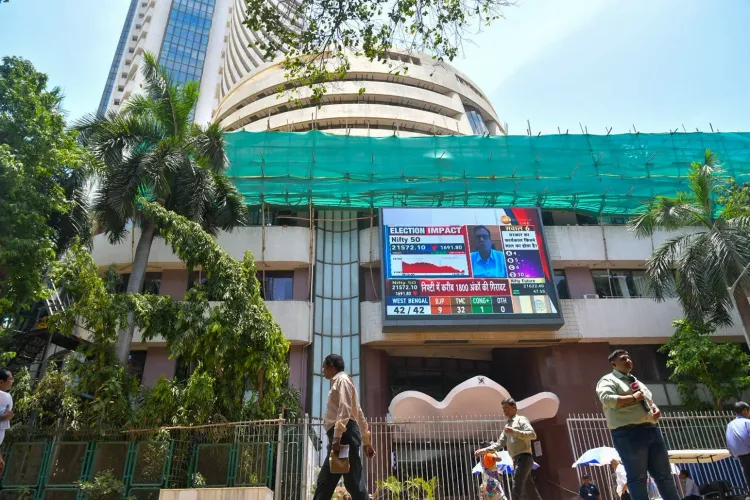Why Did the Indian Stock Market Open Lower Amidst New US Tariff Concerns?

Synopsis
Key Takeaways
- The Indian stock market opened lower amid US tariff concerns.
- Key sectors like IT and financial services experienced significant selling.
- Analysts suggest the market is technically and fundamentally weak.
- FIIs continue to sell while DIIs are buying actively.
- Technical indicators suggest potential resistance and support levels for the Nifty.
Mumbai, Aug 8 (NationPress) The Indian benchmark indices saw a lower opening on Friday, influenced by the latest US tariff concerns. Early trading indicated a sell-off in the IT and financial service sectors.
At approximately 9:38 am, the Sensex was down by 272.30 points, or 0.34 percent, trading at 80,350.96, while the Nifty dropped 75.60 points, or 0.31 percent, to 24,520.55.
Analysts suggest that the market remains technically and fundamentally weak. The Nifty's continuous lower lows signify a technical weakness, and there are currently no signs of a significant earnings increase for FY26.
Dr. VK Vijayakumar, Chief Investment Strategist at Geojit Investments Ltd, stated, "Given the current negative market sentiment driven by tariff disputes between India and the US, FIIs will likely continue their selling spree in the cash market. The bright spot is the ongoing strong buying by DIIs."
The Nifty Bank index fell 124.90 points, or 0.22 percent, to 55,396.25 early in the session. The Nifty Midcap 100 index saw a decline of 226.10 points, or 0.40 percent, trading at 56,712.20. The Nifty Smallcap 100 index was at 17,629.80, down 62.85 points, or 0.36 percent.
"The Nifty began on a weak note, dropping nearly 225 points initially. However, it rebounded strongly, recovering over 250 points to finish above the previous day's close. This index formed a bullish candlestick pattern, indicating renewed buying interest and momentum," remarked Amruta Shinde, Technical & Derivative Analyst at Choice Broking.
From a technical perspective, maintaining a position above 24,650 may unlock potential gains towards 24,850. On the downside, immediate support levels are set at 24,550 and 24,400, which could present appealing entry points for new long positions.
In the Sensex pack, the biggest losers included Bharti Airtel, Infosys, BEL, Eternal, and Axis Bank. Conversely, Titan, Bajaj Finance, Trent, and Bajaj Finserv emerged as top gainers.
On August 7, foreign institutional investors (FIIs) sold equities worth nearly Rs 4,997.19 crore, whereas domestic institutional investors (DIIs) purchased equities valued at Rs 10,864.04 crore on the same day.
In Asian markets, China, Japan, and Jakarta were trading in the green, while Bangkok, Seoul, and Hong Kong were in the red.
In the previous trading session, the Dow Jones in the US closed at 43,968.64, down 224.48 points, or 0.51 percent. The S&P 500 ended with a loss of 5.06 points, or 0.08 percent, at 6,340, and the Nasdaq closed at 21,242.70, up 73.27 points, or 0.35 percent.









